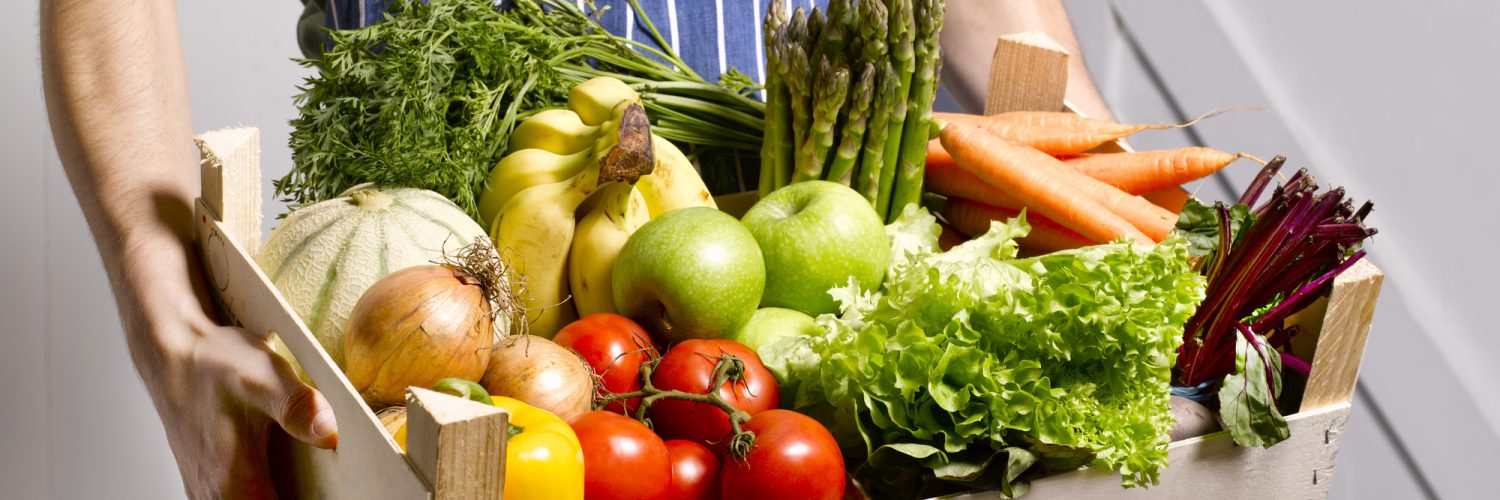September is Fruits and Veggies More Matters Month! Fruits and vegetables are the foundation of a healthy diet–they provide you with essential vitamins, minerals and fiber. In fact, they should make up half your plate at each meal. While fruit and vegetable recommendations vary based on age, the general rule of thumb is for adults to eat at least 5 servings each day. However, according to the Centers for Disease Control and Prevention (CDC), only 1 in 10 adults eats enough fruits or vegetables. Try these tips to help add more fruit and veggie servings to your day!
Plan ahead. Make sure you have 5 servings readily available for the day. It can help to write down which fruits and veggies you’re planning on eating at which meals. For example:
- Breakfast: Banana or strawberries (on your whole-grain cereal)
- Snack: Apple
- Lunch: Mixed green salad (topped with with grilled chicken)
- Snack: Sliced bell peppers and cucumber
- Dinner: Roasted broccoli as a side dish
Drink a smoothie. They can be a great way to get more servings of fruits and vegetables. Don’t rely on them as your sole source, as whole fruits and veggies provide more fiber. Click here to learn how to make healthy smoothies.
Boost your breakfast. Drink a glass of 100 percent fruit juice every morning, such as orange, pineapple or apple juice. Similar to smoothies, it is important not to rely on juice as your sole source of fruits or veggies to ensure you’re getting enough fiber and not overloading on sugar.
Keep fruits and vegetables accessible. Always make sure they’re close at hand for an easy snack!
- Store them front and center in your fridge, freezer or pantry to ensure you see them first, rather than unhealthier foods.
- Stash non-perishable fruit and vegetable products–like dried fruit, fruit cups or a can of 100 percent vegetable juice–in your desk at work.
- Always keep fruit readily available. Fruits like apples, bananas, pears, peaches and plums can stay out on your counter.
Use them as an excuse for a field trip. If you’re looking for a fun weekend activity, visit a local produce stand or farmer’s market and choose some fresh fruits and veggies to enjoy later. In the fall, go apple picking or to a pumpkin patch.
Trick the fussiest eaters. Sneak fruits and vegetables into your meals with the help of this blog post.
Grow your own. Create a backyard garden. Don’t have a backyard? Plant tomatoes, lettuce, bell peppers, strawberries, microgreens or herbs in pots. This is a project that allows you to reap some truly delicious rewards. Get tips to help you get started here.
Don’t have the time to cook a fresh vegetable as a side to dinner? Opt for frozen. They can be just as good for you as fresh. When fruits and vegetables are harvested, they begin to lose their nutrients. In some cases, frozen produce may actually have greater nutritional value as it is picked ripe and immediately frozen, which preserves the nutrients.
Find what works for you. No matter how you decide to add more servings to your day, ensuring you’re eating enough fruits and vegetables can help reduce the risk of chronic diseases such as heart disease and type 2 diabetes as well as obesity.



